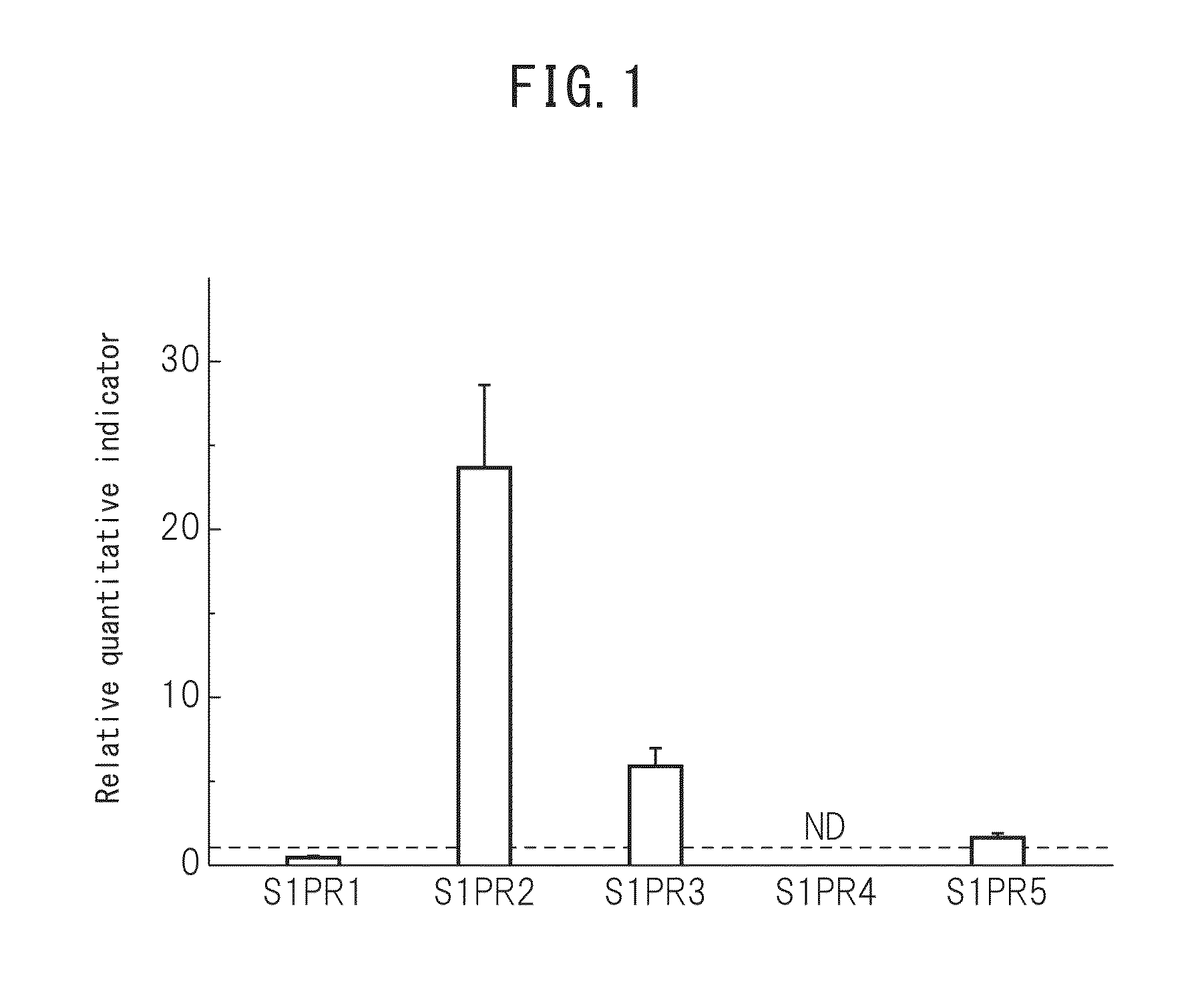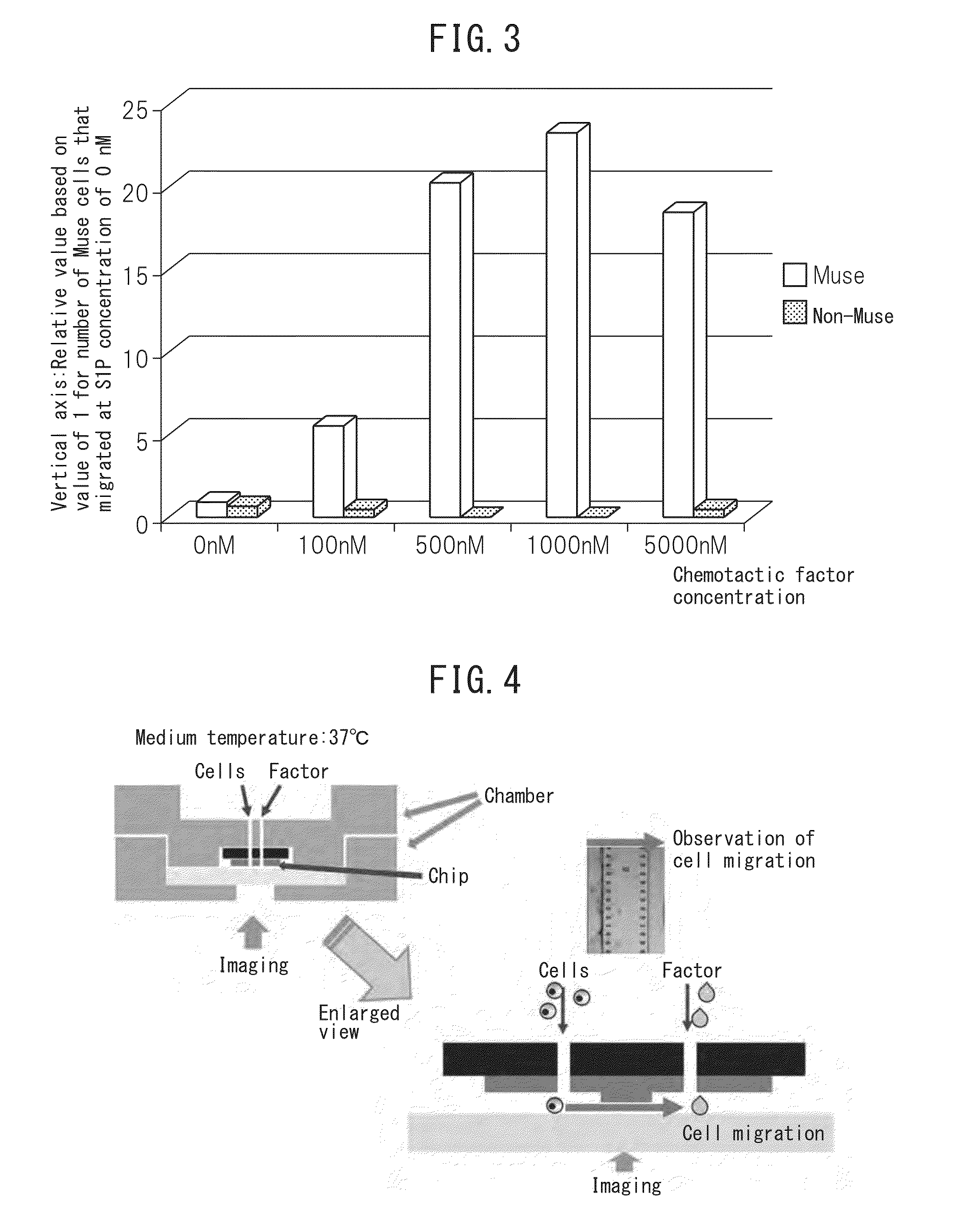Pharmaceutical composition including migratory factor for guiding pluripotent stem cells to injury
a technology of migratory factor and pharmaceutical composition, which is applied in the direction of drug composition, biocide, cardiovascular disorder, etc., can solve the problems of insufficient identification of chemotactic factor that guides muse cells to the damaged site, inability to overcome hurdles, and fluctuation of therapeutic effects, etc., and achieves the effect of strengthening the chemotactic activity of muse cells
- Summary
- Abstract
- Description
- Claims
- Application Information
AI Technical Summary
Benefits of technology
Problems solved by technology
Method used
Image
Examples
example 1
Selection of Chemotactic Factor Candidate Substances by Proteomic Analysis
[0075]A proteomic analysis method developed by a group led by Professor Isobe of the Tokyo Metropolitan University (see Taoka, et al. (2004), ibid) was used to select candidate substances of chemotactic factors that guide Muse cells to a damaged site. This method is a method for identifying large numbers of proteins contained in a sample by analyzing a complex peptide mixture obtained by digesting a protein mixture with protease, and is also referred to as the “shotgun method”. An automated system for carrying out this method is composed of an integrated LC system combining an ion exchange LC, separating reverse phase LC and desalination system, a hybrid mass spectrometer and a data analysis system. The integrated LC system is characterized in particular by the combining of two types of LC having different separation modes (ion exchange mode and reverse phase mode), and since the resolution of the overall syst...
example 2
Identification of Chemotactic Factors
(1) Preparation of Human Muse Cells
[0076]Preparation of human Muse cells was carried out in accordance with the method described in International Publication No. WO 2011 / 007900. More specifically, adhesive mesenchymal cells were cultured from human bone marrow aspirate followed by allowing the cells to proliferate and introducing lentivirus-GFP into the cells. A cell population containing GFP-labeled Muse cells or Muse cells was separated by FACS as cells double-positive for GFP and SSEA-3. In addition, non-Muse cells constituted a GFP-positive cell group of the aforementioned mesenchymal cells that is negative for SSEA-3, and these cells were used as a control. Subsequently, the cells were adjusted to prescribed concentrations using phosphate-buffered physiological saline or culture broth and then used in the Boyden chamber method and cell kinetics analysis technology described below. Furthermore, in the case of using cells obtained by culturing...
PUM
| Property | Measurement | Unit |
|---|---|---|
| diameter | aaaaa | aaaaa |
| depth | aaaaa | aaaaa |
| length | aaaaa | aaaaa |
Abstract
Description
Claims
Application Information
 Login to View More
Login to View More - R&D
- Intellectual Property
- Life Sciences
- Materials
- Tech Scout
- Unparalleled Data Quality
- Higher Quality Content
- 60% Fewer Hallucinations
Browse by: Latest US Patents, China's latest patents, Technical Efficacy Thesaurus, Application Domain, Technology Topic, Popular Technical Reports.
© 2025 PatSnap. All rights reserved.Legal|Privacy policy|Modern Slavery Act Transparency Statement|Sitemap|About US| Contact US: help@patsnap.com



